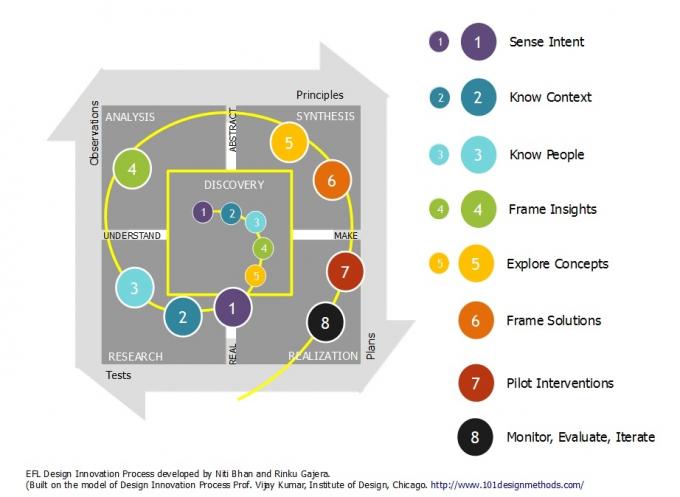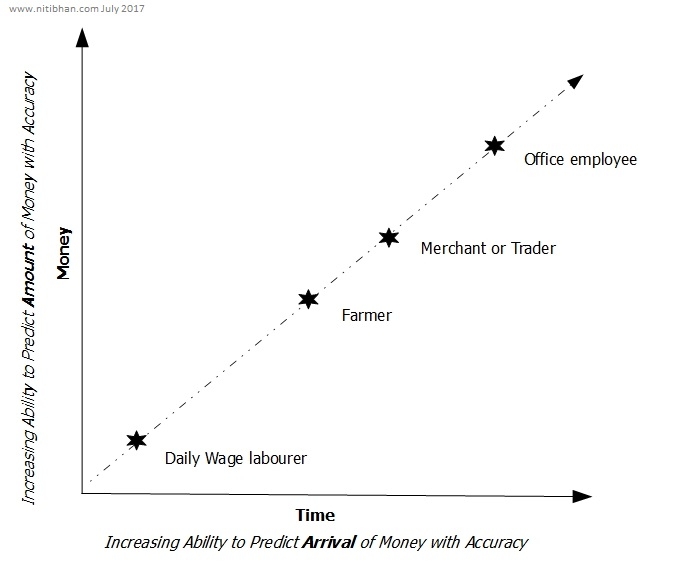Who are you designing for? Using human-centred design to create inclusive value
Could you briefly introduce yourself and your work on customer-centricity?
My background is multidisciplinary, in business, engineering and design. I came to Finland when the Aalto Design Factory first opened almost ten years ago, joining the first research wing. The concept of my work is to bring a holistic perspective to innovation, looking at the viability, desirability, and feasibility of a new product or service, including non-profit interventions and programmes. Traditionally, feasibility - the engineering or technology, and viability - the profit margins and the business model, are the primary focus when evaluating new market entry, but my background is from user-centred or human-centred design - and we put equal, if not more, emphasis on desirability - "What do people want? What do they need?".
My entire work would fall under what you call customer-centricity. We take a far broader approach than focusing only on customers, because not everybody may be a customer, but they are all human. You will find practitioners in my field saying human-centred design or user-centric design. That is the more common name for what we do. Though we integrate payment plan considerations and business model, the technology with the infrastructure and the operating environment, first and foremost, we are driven by primary research. Understanding people in their context, with their challenges and problems. That provides us with the landscape, the context, of the operating environment as a solid foundation to ground our work.
My own focus area has been the informal economy and, especially in the past seven years, in sub-Saharan Africa. I am looking at products or services, business models, and most recently, development programme designs, where the context is not fully understood or documented, where there is no documentation, no data, no research. Therefore, understanding people and their context comes first, then concept design and marketing strategy is developed. That is what my firm and I specialise in.
What does customer value mean to you? How does it relate to human-centred design?
I will give you one example to distinguish between why we say the end-user and user-centric design or user-centred research. One of the big shifts that has taken place over the past 10-15 years has been that design itself has evolved from being purely artefact oriented, where the outcome is something tangible like a product or service, to being considered an extremely powerful set of tools and methods. Today, you can use design research methods for understanding people in their own context, for looking at the opportunities for innovation or interventions in that context. Once we position ourselves that way, the word customer becomes too narrow.
Two years ago, we did a project for Trademark East Africa, a multi-donor funded non-profit organization in the East African community, looking at trade facilitation and business competitiveness. They asked us to understand the dynamics of the informal trade ecosystem at the borderland. We had to start from scratch. We had to put in a discovery phase: What are the dynamics? How do we understand the informal trade ecosystem in the borderlands? Borderlands are important to trade facilitation in the community, when you want to create, for example, a single customs union or if you want to lower the barriers to trade.
Once we understand what the challenges are, can we recommend a set of interventions? What are the interventions that we could recommend and/or design that could help trigger beneficial transformation? The third part of the project was to create a robust methodology for implementing this at the borderlands, meaning to decide how to codify it. This is important so that we don’t need to spend months at each border to understand it. There are certain elements that are common challenges and others which are local.
So in this regard, the value created is for more than just the "customer" per se or the organization, but is thought of in a systemic manner. How do we create value for entire ecosystem? There is a disconnect between more systemic thinking and a company-like approach of serving a client. How do we embed into our methodology that we don’t just think about value created in terms of shareholder value or economic value, but take the more Western European approach of triple bottom line rather than profit maximisation. When we realise that our system does not fit people's needs, we must redesign the system rather than attempt to force fit for profits.
Do you have a best practice example for customer-centricity?
I don’t know if there is a better practice than acknowledging that your customer is the most important stakeholder, whether they are physically present or not, within the public sector or the private sector. We have designed and held workshops for multidisciplinary stakeholders where everybody was an expert on what the African farmer wanted. But, at no point was there a pause to either introduce the direct voice of the African farmer or even, if you cannot bring them all there, had there been an inquiry about what they wanted and their inputs shared with the group. To me, you cannot do x without y.

If you compare formal and informal economies, are there differences when companies want to create customer value?
Yes, I call this the system monster. I will give you an example of what I mean by the system monster. You have a nice salary job. You get a regular amount on a monthly basis and it goes to your bank account. Tomorrow you want to buy a house. You go to your bank manager and try to get a mortgage. You go with your partner who also has a salary job, and no problem, you both get a mortgage for your house for an amount to be paid in instalments for the next number of years.
In contrast, you are an Uber driver and your partner is a part-time DJ and t-shirt designer. You go to the bank. You are on an irregular income stream from a variety of sources. It does not mean that you are poor, you have been living a good life. Things are there, but you do not fit in the system, which was designed for white-collar office workers or blue-collar factory workers with the predictability of regular salaries and thus the future planning ability. What do you think happens at the bank when asking for that mortgage for the house? That is the typical situation in the informal economy.

Payment model framework: time and money, Copyright: Niti Bhan
This is what I have been looking at for the last ten years. The minute you recognise that the system needs flexibility, negotiability, reciprocity is when you open up how you are going to be able to design for very different conditions in the informal economy.
On the other hand, flexible models could also be interesting for customers from the formal economies and with a regular income.
Yes, that is exactly what we have been seeing. I started looking at the informal economy with the prepaid issue in 2008. By about 2012, in Barcelona, there was a big symposium on the informal economy. By that time, people in Europe and Spain had begun noticing that the system had changed. People were working in gig economy, without the regular jobs and predictable paychecks. The systems must adapt to this change.
Systems that are more inclusive start the design from the perspective of the informal sector and then apply that design to everyone?
Absolutely. If you can design for them, you are inclusive for everybody else.
How do the metrics that donors ask for relate to the metrics that are relevant from a customer perspective?
When you get into donor and customer, you bring in two different industries - the for-profit and the non-profit. If you are developing a new product, like a solar lamp, which is donor funded and not sold to the end user, then recognise and understand that. Don’t confuse the issue by trying to make people who will receive the product for free your customers. Your customer in this case is the donor. Non-profits who will claim the end user as customer cannot be customer centric because they are dancing to the tune of the donors.
Who is the customer? Who are stakeholders? Who are you designing for? I think these should be questions which need to be raised and codified at the start of the programme design and development process involving donors and multiple stakeholders. Then we will have clarity on the metrics for success.
To what extent is there a difference between traditional market research and the human-centred design approach? Why should companies do one or the other?
To give you a background, twenty years ago, I was head of advertising in India for HP. If I would have to give advice to myself, I would say: No, it is not one or the other. This is not an ideology, which one must choose one way or the other. This is a bucket of complementary tools. There are cases in which I am already familiar with my target audience; I already have decades of consumer data. A rapid market survey is sufficient. You don’t need context or further understanding, but when you go into a context where it is the first time that the person is being studied: Who has mapped the operating environment of the borderland economy, the informal trade ecosystem, before? Then, we need something more robust, more exploratory, more discovery driven, and deeper in terms of qualitative insights, but still with structure and rigour so that we are not lost with all the new details and data, but we have a plan or a programme to follow. There are methods and tools that allow me to grasp context and people from a goal and objectives perspective, in a rapid and cost-effective manner. This would be the key difference between the traditional approach for a known market and the human centred approach for an unknown context and customer segment.
Are there other tools that contribute to developing customer-centric models?
Nothing replaces going in to the location yourself, particularly when looking at inclusive businesses. You cannot rely on secondary data and definitely not on the analytical data-metric driven aspects alone. You need the thick narrative of qualitative and immersive aspects, meaning all the fuzzier methods. Right now, the world is moving more and more towards big data. People will tell you that big data can tell you everything, but if you don’t know that everybody is using prepaid because they don’t have a pay check, how do you contextualise whatever insight the big data will tell you about their phone behaviour?